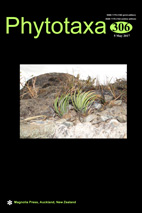Abstract
Kryptoperidiniaceae are a small group of dinophytes hosting a tertiary endosymbiont derived from a diatom (Tomas et al. 1973, Horiguchi & Pienaar 1994). Those so called ‘dinotoms’ (Imanian et al. 2011) include Dinothrix, Durinskia, Galeidinium, Kryptoperidinium (= Phyllodinium) and some species currently assigned to “Peridiniopsis” and “Peridinium” (Tamura et al. 2005, Horiguchi & Takano 2006, Hansen et al. 2007, Zhang et al. 2011). Besides ‘possessing a diatom endosymbiont’ as a highly derived trait, the monophyly of Kryptoperidiniaceae is also supported by a unique type of eyespot that has possibly derived from the original chloroplast (Moestrup & Daugbjerg 2007). In molecular trees, Kryptoperidiniaceae constitute a well supported monophyletic group (Kretschmann et al. unpubl.), but it is not finally resolved at present, whether they are embedded in the Thoracosphaeraceae or constitute their sister group (Gottschling & McLean 2013). Regarding habitat preference, molecular trees further indicate at least two independent marine→freshwater transitions in the Kryptoperidiniaceae during the late Paleogene at the latest (Žerdoner Čalasan et al. unpubl.).

